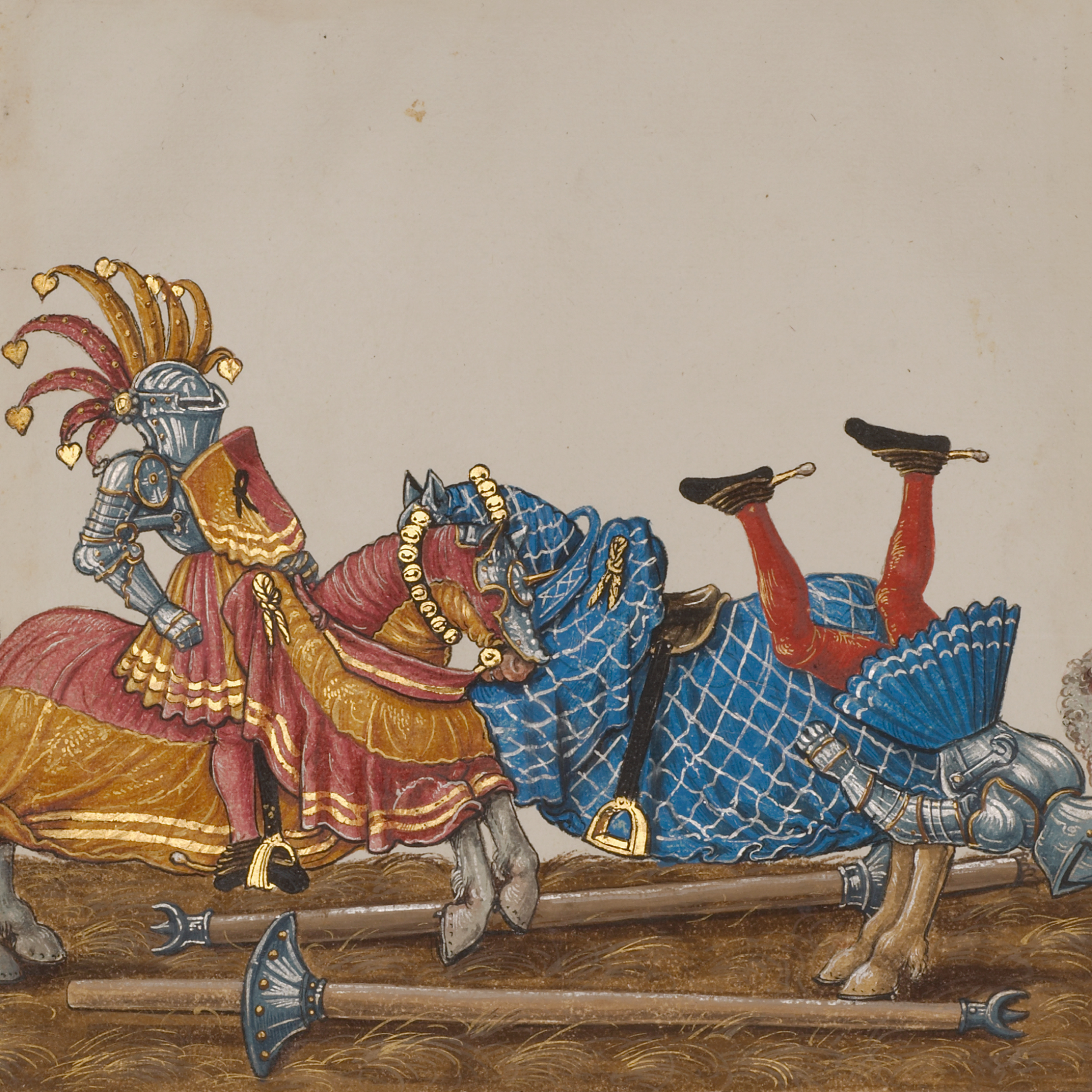Among the various mock combats fought by knights and noblemen in tournaments, the joust was one of the most spectacular. The joust of peace required highly specialized armor that was unsuited to any other use, and usually made by the greatest armorers due to the exceptional metalworking skills required. This special installation features an armor for the joust of peace of Philip I of Castile (1478–1506) on loan from the Imperial Armoury, Kunsthistorisches Museum Vienna.
A rare example among surviving armors for its refined decoration, it is also remarkable in that it was intended for a teenager. Its owner Philip I became duke of Burgundy, count of Flanders, and the ruler of additional lands, albeit in name only, upon his birth. He began wearing armor when he was just six years old, and this one was made for training and participating in tournaments around the time that he turned 15, when he was declared ready to rule. Through marriage, Philip became king consort of Castile and the first member of the House of Habsburg to rule over Spanish territories. His jousting armors were key to shaping his public image of a capable leader.
#MetArmsAndArmor
